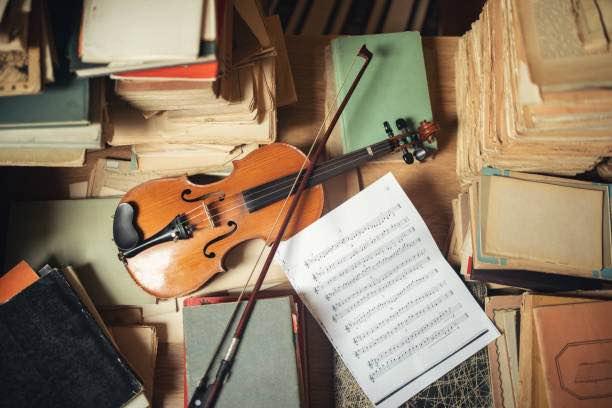Are you looking to learn non-traditional techniques on the violin? Wondering how far you can take this instrument?
The violin is one of the most versatile instruments in the world. It can accommodate a seemingly infinite amount of styles, sounds, and ensembles. The violin has 2 octaves of range in first position, making a wide amount of notes available to players of all levels. And you can use the violin to play almost any technique; making it possible to play an incredible number of sounds, and even imitate other instruments.
Let’s take a closer look at some non-traditional techniques on the violin, how to play them, and how they are used:
1. Chopping
This is a technique used very often among bluegrass fiddlers. The sound is an imitation of the mandolin chop typical to the style, which is a rhythmic backbeat used to push the music forward. It is usually utilized in a bluegrass band when the mandolin player is playing a solo, playing fills, or otherwise not chopping.
To use the chop on the violin, you have to play very close to the frog of the bow. Use the weight of the bow to drop it onto the strings and make a rhythmic, scratching sound. This technique can be extrapolated and used to make many different rhythms that even exceed the role of replacing the mandolin rhythm. Here are two examples of chop rhythms on the violin.
Example 1:
The first one is a classic example of a more simple chop. This is a video of a famous traditional bluegrass band, The Del McCoury Band. Notice how the fiddle player, Jason Carter, switches between playing fills behind the vocal lines (in the first verse), and using chopping (in the second verse).
Example 2:
This second example is from Casey Driessen, who developed the chop as a way to self accompany on the violin. He also uses double stops to create three part harmony, which I will discuss as another non-traditional technique later in the article:
2. Strumming
This is a great technique used a lot in traditional music ensembles, especially in bluegrass and old time music. The violin is not usually considered a “strummed” instrument in the same way as the guitar or ukulele, but it actually can be played that way. All you have to do is find the chord shapes, and strum away!
Since violin strings are not built to be strummed like other instruments, I recommend strumming with your thumb or a finger instead of a pick. And, if you don’t know how to pick out chords on the violin for yourself, you can search on the internet for mandolin chords, and use them on fiddle. The mandolin is tuned the same way as the violin, so all the fingerings are the same. You just have to know how to decipher fret numbers if you’re not used to fretted instruments (Tip: on all fretted instruments, each fret is equal to a half step).
Violin strumming is used as a way to accompany one’s self while singing, or to accompany other musicians if they’re playing the melody, especially if there’s no other strummed instrument in the ensemble.
3. Glissando
This technique is used every once in a while in classical style music, especially in more modern pieces. Glissando is an Italian word that means “slide”, and it is accomplished by moving your finger up or down the finger board to slide between notes.
It’s considered a rather dramatic sound and usually just used sparingly in classical music. It is also used often in fiddle music, but only to slide small distances like a half step.
4. False Harmonics
There are several natural harmonics that can be found at various points of any string on the violin. These include at the half, ⅓, ¼, etc. point in between the bridge and nut.
Using these points, more harmonics can be formed by placing a finger on the string, effectively shortening the string, and then holding another finger lightly on top of the same string at one of these points, creating the harmonic. This is called a false harmonic, and can be used to play melodies.
One great example I have heard of this being used was in the band Che Apalache, violinist Joe Troop used it to imitate the sound of Japanese Traditional festival music, in the song “春の便り” (The Coming Of Spring):
5. Three Part Harmony
This is less of a specific non-traditional technique to play on the violin, and something that was developed over recent years by many violinists who wanted to be able to accompany themselves and play solo.
This uses the logic that chords are made up of three notes, and two notes can be continuously played at the same time on the violin. A violinist can sing the melody to a song, and then play the other two notes in the chord on their violin, creating three part harmony with just the violin and voice.
The resulting sound is very full and doesn’t miss any other instruments. This can be combined with other techniques, including chopping, strumming, and false harmonics.
Non-Traditional Techniques On the Violin Are Endless!
As you can now see, there are practically endless possibilities for what the violin can do and what sounds it can make. Also, violinists are innovating every day, and creating even more new non-traditional techniques in order to further widen the scope of sounds imaginable.
It may seem that on such a small instrument with such a long history, surely all the possibilities have been exhausted already. But think again! Everyone has the capacity to be a visionary, and pave the way for other violinists around the world and through time.
Alani Sugar
